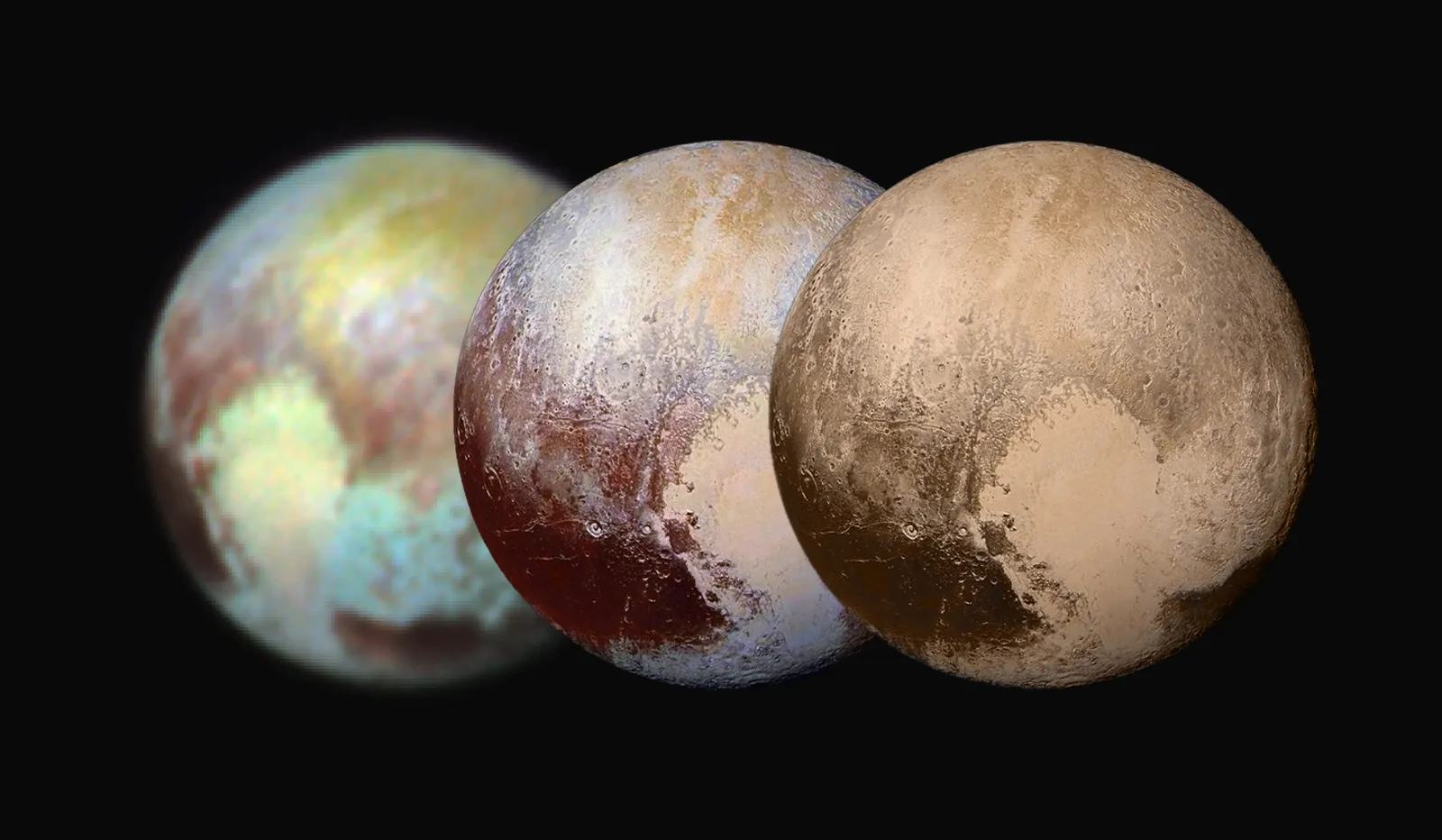Pluto, once considered the ninth planet from the Sun, is now classified as a dwarf planet. It is a small, icy world located in the Kuiper Belt, a region beyond the orbit of Neptune. Pluto is known for its unusual orbit and its five moons.
Physical Characteristics
- Size: Pluto is smaller than Earth’s Moon and has a mass about 0.2% that of Earth.
- Composition: Pluto is primarily composed of rock and ice. It is thought to have a core of rock and a mantle of ice.
- Atmosphere: Pluto has a very thin atmosphere composed primarily of nitrogen, methane, and carbon monoxide. The atmosphere is thought to be frozen to the surface during the coldest part of Pluto’s year.
- Orbit: Pluto’s orbit is highly elliptical and inclined to the plane of the solar system. This means that Pluto can sometimes come closer to the Sun than Neptune.
Moons of Pluto
Pluto has five known moons:
- Charon: The largest moon of Pluto, Charon is about half the size of Pluto itself. It is thought to have formed from a collision between Pluto and another object in the Kuiper Belt.
- Nix: Nix is a small moon that orbits Pluto at a distance of about 39,000 miles (63,000 kilometers).
- Hydra: Hydra is another small moon that orbits Pluto at a distance of about 43,000 miles (69,000 kilometers).
- Kerberos: Kerberos is a small moon that was discovered in 2011. It is thought to be a fragment of Charon.
- Styx: Styx is the smallest moon of Pluto and was discovered in 2012.
Exploration of Pluto
The New Horizons spacecraft was the first to visit Pluto in 2015. It provided detailed observations of the planet and its moons, revealing a complex and fascinating world. New Horizons also discovered that Pluto has a thin atmosphere and a large underground ocean of water.
Future missions to Pluto may focus on exploring the planet’s surface in more detail and searching for signs of life. Scientists are also interested in studying the Kuiper Belt, which is a region of the solar system that contains many icy objects like Pluto.
Pluto is a fascinating world that continues to captivate the imagination of scientists and the public alike. As we learn more about this dwarf planet, we may gain new insights into the formation of our solar system and the potential for life beyond Earth.
